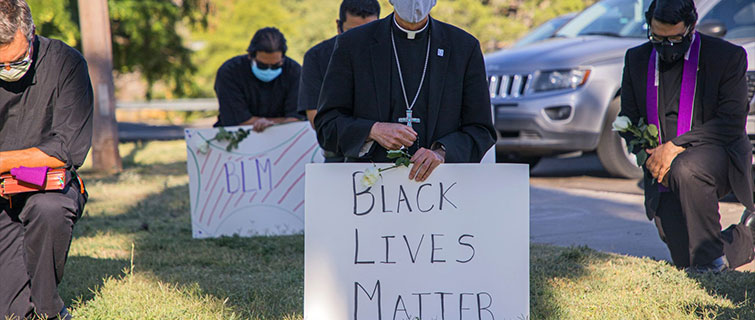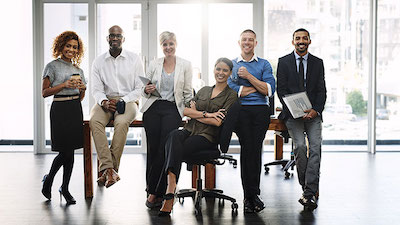
In the weeks since the killing of George Floyd and the ensuing protests for racial justice in cities across the country, Sukari Pinnock has been inundated with requests from companies and organizations wanting to address discrimination in their workplaces.
Sometimes, these leaders have some idea of the enormity of what they are asking. But often, said Pinnock, an organization development (OD) consultant, they tend to see the issue as a discrete problem, something that can be handled in a two-hour workshop or addressed in the way Starbucks did two years ago after police were called on Black customers in one of its Philadelphia coffee shops: It shuttered all 15,000 of its U.S. locations for a half-day of diversity training.
These kinds of responses accomplish little, Pinnock said. And they can even make the situation worse, exposing just enough deep-seated biases and preconceptions to leave participants feeling shamed, blamed, anxious—and resistant.
That’s not the way change happens.
“Societies don’t move quickly,” said Pinnock, MSOD, PCC, an instructor in Georgetown University’s Master's in Human Resources Management program. “Social change doesn’t happen overnight. This social justice and racial equity work—it’s not turnkey work.”
Challenging Beliefs, Fostering Growth
Change is possible, however, and there are many effective models out there; but these take a lot more time and commitment than a two-hour or half-day “diversity and inclusion” session. One example is a Georgetown program Pinnock leads called the Executive Certificate in Diversity, Equity, and Inclusion. Created in 2013, the six-month cohort program brings together diverse groups of professionals who want to make a difference in their organizations.
Pinnock, who designed and has directed the program from the start, says that applications have doubled since the turbulent events of this spring.
Like other diversity and inclusion programs, Georgetown’s program examines the research on issues of diversity and inclusion, as well as the evolving concept of equity. But it is also highly experiential. It begins by challenging students to confront their own biases and worldviews in a safe, supportive, and diverse environment, then supports their learning over many hours of intensive work. The learning methodology is called “Use of Self,” and it dovetails with Georgetown’s core values of “People for Others” and “Educating the Whole Person.”
“We want people to understand,” Pinnock said, “that all the theories and models and content in the world can’t help you if you are not willing to use yourself effectively to bring about the change you want to see in the world.”
Here, four graduates talk about what they learned in the certificate program and how they are using this knowledge and experience in their careers.
Stephen Graves
“But … all lives matter.”
Stephen Graves lost count of how many times people have said that to him. Most of the time, it didn’t seem to be a political statement, as it might have been in other places. It was more an expression of bewilderment. Because, for some people who live in one of the states with the highest white population in the country—a generally progressive place that is home to Ben & Jerry’s and socialist presidential candidate Bernie Sanders—the problems of Blacks and other underrepresented groups might not seem all that relevant.
It was Graves’ job, as head of diversity and inclusion at the University of Vermont Medical Center, to make those issues real, and it could be a tiring job indeed.
“We’re not saying that all lives don’t matter,” Graves said. “We’re expressing a sentiment that, time and time again, America’s systems have reinforced a sense that Black lives aren’t treated and viewed equally.”
While explaining this as a Black man can be exhausting, Graves persisted and, using the skills he learned at Georgetown, kept having courageous conversations on topics like implicit bias and systems thinking—a type of analysis that considers the impact of a total system or systems. And he was able to convince skeptics that this action was not an effort to segregate employees but to ensure that everyone felt a sense of belonging.
“I’m encouraged by what I’m seeing, from companies, not only across the country, but globally,” said Graves. He feels good about what he and his colleagues accomplished in nearly two-and-a-half years in Vermont and the prospects for his new job as Manager of Diversity & Inclusion at GT Independence, a Michigan-based company that helps people with disabilities and long-term care needs set up and manage support services.
“I’m curious to see if the momentum can continue.”
Erwin Hesse
Erwin Hesse had two reasons for taking the diversity and inclusion program at Georgetown: one general, the other quite specific.
As Executive Director of Enrollment Management at the School of Continuing Studies, Hesse, Ed.D., is tasked with trying to make the demographics of the students more closely resemble the diversity of downtown Washington, D.C.; the region; the country; and, indeed, the world.
This is not just a pursuit of numbers. For Hesse, who is Hispanic and faced his share of discrimination growing up in Montgomery County, Md., it is also a calling.
That is the general reason why Hesse enrolled in the program last fall. But, more specifically, he wanted to use the insight and expertise he learned to form something he felt was critically needed at SCS: a broad-based council that would monitor diversity issues and be a resource for students with questions or concerns about anything happening at the school.
Hesse completed the program in February. Then the pandemic struck. But that didn’t stop him and others at SCS from meeting virtually throughout the spring. The exact nature of the committee’s work is still being finalized, but Hesse wants the group—which will be called the Diversity, Equity, Belonging, and Inclusion Council (DEBIC)—to be an integral part of the leadership team.
“Little did I know back in September that these issues were going to become much bigger,” Hesse said. “But now, more than ever is the time to take action. There is never going to be a better time for us to implement a council for diversity and inclusion.”
Chevara Orrin
The vote by the Jacksonville (Fla.) City Council was a bitter defeat, but it motivated Chevara Orrin to embark on a multifaceted career fighting for inclusion and social justice.
By a 10-9 vote, the council rejected a proposal to expand the city’s human rights ordinance to protect gays and lesbians from discrimination.
That was on August 12, 2016. By the time the proposal was finally approved more than four years later, Orrin was completing Georgetown’s diversity and inclusion certificate, had co-founded the group “We Are Straight Allies” on behalf of LGBTQ rights, and would soon create #WHITEANDWOKE, a national campaign designed for white people committed to dismantling institutional and structural racism.
Today, she is also a diversity and inclusion consultant with more than 20 corporate clients.
At Georgetown, Orrin was able to use a systems approach to workplace diversity and inclusion issues. For her Capstone project, she collaborated with four other students in a consulting project for Sodexo.
“They wanted us to look at how women were promoted to levels of leadership in the organization,” Orrin said. “And they wanted us to look at whether or not the quality of life at Sodexo meant different things for women at different life stages, particularly looking at women of color and white women.”
Angel Lugo
It might seem like a minor issue: including or omitting accents on the nameplates of Latinx service members. But it goes to the very heart of what inclusion and cultural diversity are all about.
Not long after he enrolled in Georgetown’s program, Angel Lugo, the U.S. Air Force’s Chief of Diversity & Inclusion Integration, saw a class video about a successful Major League Baseball initiative called ponle acento (“put an accent on it”). In short, the league, after listening to the 27 percent of its players who are Latinx, decided to include accent marks with the names printed on their uniforms.
That got Lugo thinking about Air Force policy in this area. The Air Force didn’t ban the accents. It just didn’t promote them and left those who wanted to include accents on their nameplates to have the work done on their own.
Thanks to Lugo’s efforts, that has all changed, and now the Air Force actively promotes the practice. And the fact that this was accomplished barely a year after Lupo raised the issue says something about the Air Force, Lugo’s abilities, and the impact of the diversity and inclusion program that helped make it all happen.
“For me, what was most incredible about the program was the opportunity to just network and really dig into some really difficult conversations, very enlightening conversations, with individuals who are in different stages of life,” Lugo said. “The beauty of it was just to grasp the diversity of perspectives from those who worked in so many different areas.”
